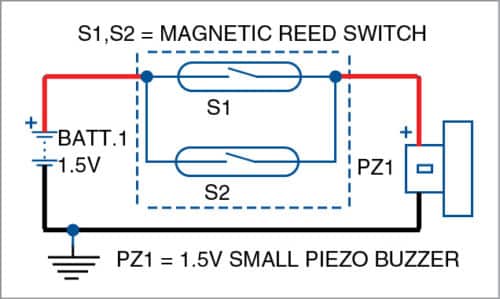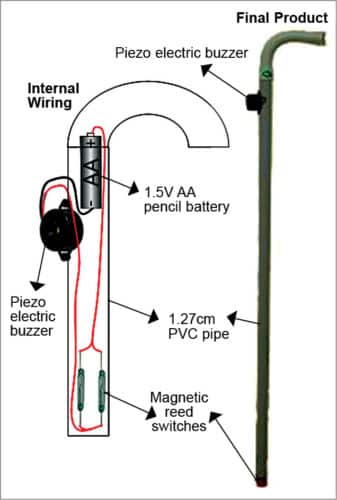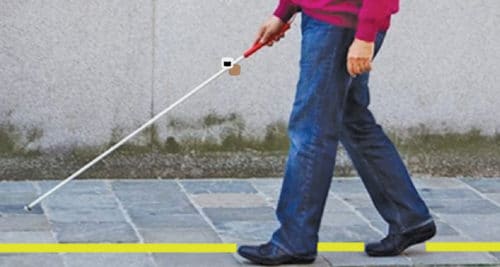 A white cane is used by the blind or the visually-impaired to scan the surroundings for obstacles and orientation marks, and find the correct path. The visually-impaired using a white cane still need a sighted guide when they need to walk down the street or use the stairs. This proposed project will help them reach their destination without much dependency on a sighted guide. It uses magnetic reed switches mounted on a specially-designed walking stick. The complete system requires magnetic tracks designed for the visually-impaired.
A white cane is used by the blind or the visually-impaired to scan the surroundings for obstacles and orientation marks, and find the correct path. The visually-impaired using a white cane still need a sighted guide when they need to walk down the street or use the stairs. This proposed project will help them reach their destination without much dependency on a sighted guide. It uses magnetic reed switches mounted on a specially-designed walking stick. The complete system requires magnetic tracks designed for the visually-impaired.
Circuit and working
The circuit diagram of the walking stick for the visually-impaired is shown in Fig. 1.

It is built around two magnetic reed switches, 1.5V AA pencil cell, piezo buzzer, connecting wires and 1.27cm (1/2-inch) PVC pipe for construction.
Two normally-open (NO)-type reed switches are placed at the bottom of the walking stick, which is connected to a buzzer. The proposed construction detail of the magnetic walking stick is shown in Fig. 2.

A suitable magnetic track should be constructed on the roads, street crossings, office corridors and the like. Whenever a user walks down the magnetic track along with this stick, reed switches get closed and activate the buzzer. Presence of the buzzer sound indicates that the user is following the right track or path. When the buzzer sound stops, the user understands that either he or she is walking on the wrong path, has reached the destination or it is time to ask for help from the people nearby.
Construction and testing
Take a 1.27cm PVC pipe and insert two reed switches and a 1.5V cell inside the pipe, as shown in Fig. 2. Mount the buzzer at a suitable location outside the pipe.
The whole system can be enclosed inside the PVC pipe and used as a white cane. The user does not need to carry any other device. He or she should always keep the tip of the walking stick near the magnetic track while walking. Fig. 3 shows the application of the project along the magnetic track (indicated in yellow).

The piezo buzzer can be replaced with a vibrator. When the user goes on a wrong path, vibration stops. At this time, he or she can ask for help from other people around to guide him or her in the correct direction.
M. Syed Mohamed Buhari is an embedded software engineer at WESA, Karaikal. His interests include embedded system design, instrument and control systems, and website design.







would like to know where to buy these parts
Would like to know where to purchase this item